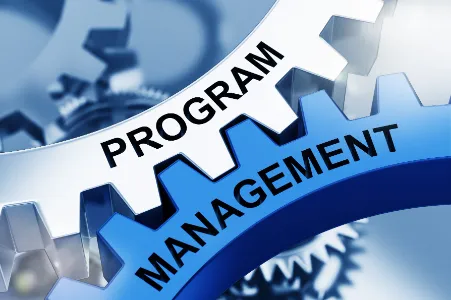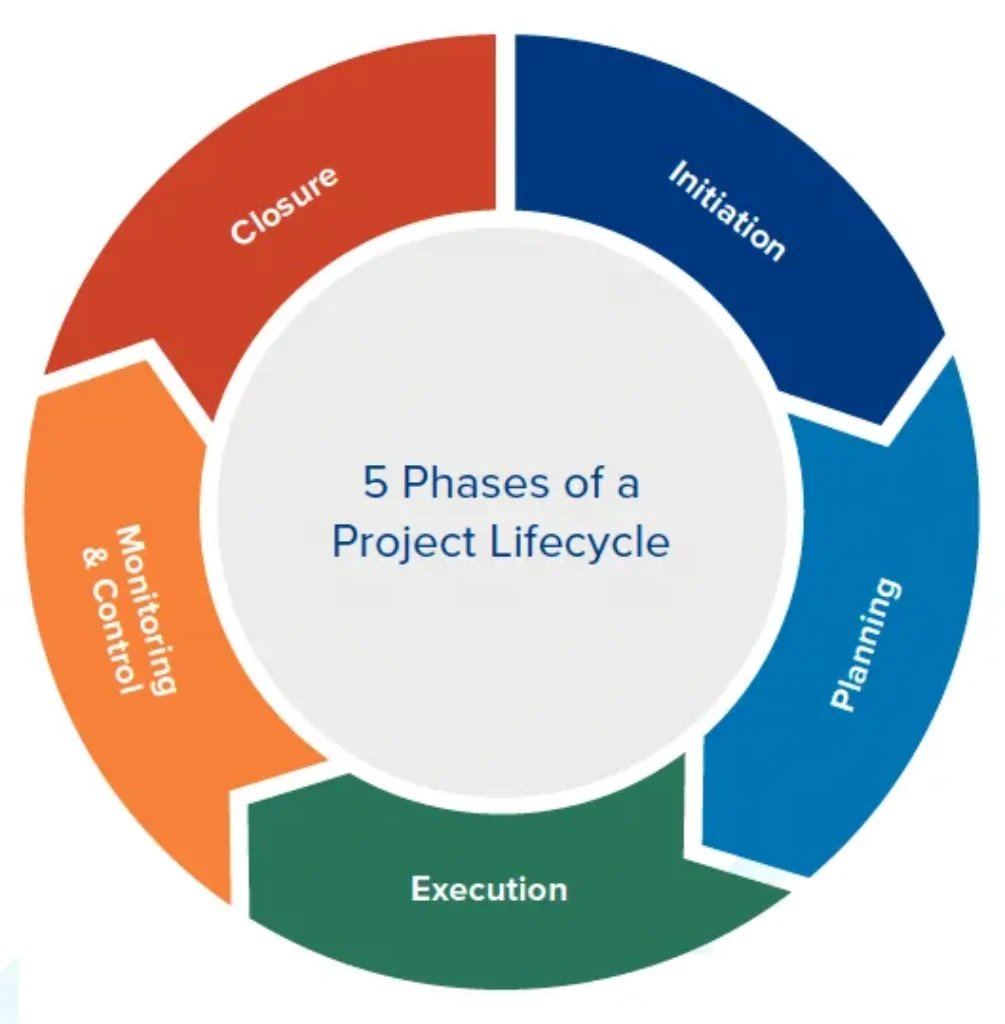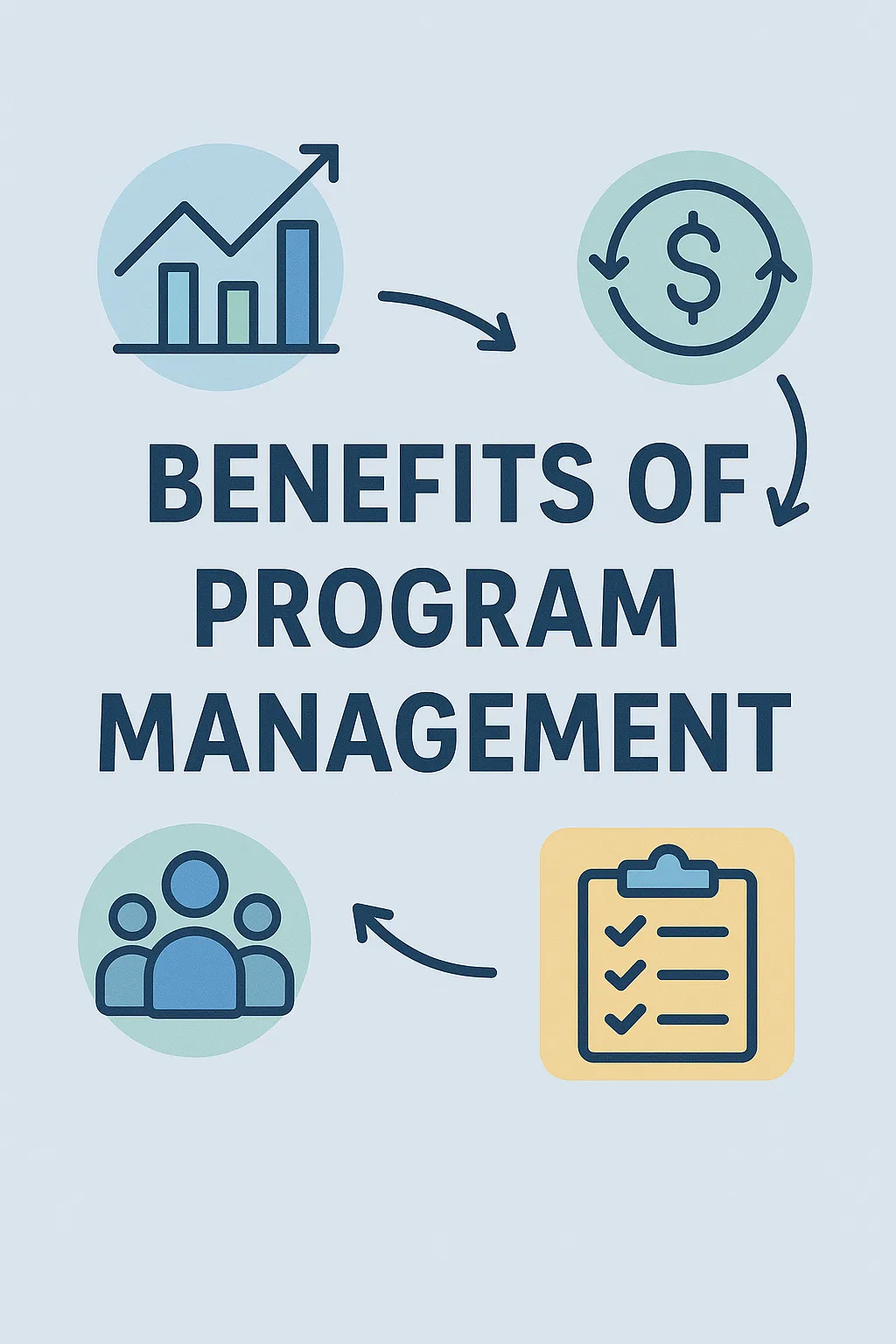
Executive Summary
Program management is the strategic process of coordinating and managing multiple related projects to achieve overarching organizational objectives. Unlike project management, which focuses on delivering a specific outcome within a defined timeline, program management looks at the bigger picture—aligning projects with business goals, optimizing resource utilization, and ensuring long-term benefits realization.
Organizations adopt program management to improve efficiency, foster collaboration across teams, reduce risks, and ensure that strategic initiatives deliver value. This guide explores the concept, key components, processes, benefits, challenges, strategies, tools, and best practices associated with program management.
Table of Content
Introduction
In the modern business environment, organizations often run multiple interrelated projects simultaneously. Each project contributes to a broader strategic objective, such as launching a new product, implementing enterprise technology, or entering a new market. Coordinating these projects individually can lead to inefficiencies, misaligned priorities, and resource conflicts.
Program management provides a structured approach to oversee and integrate these projects under a unified framework. It ensures that all projects are aligned with the organization’s strategic goals and deliver value beyond individual project outputs. Program managers focus on long-term outcomes, resource optimization, risk mitigation, and benefit realization.
Core Concepts of Program Management
- Program vs. Project – A program is a collection of related projects managed together to achieve strategic objectives, whereas a project is a temporary endeavor with a specific deliverable.
- Strategic Alignment – Ensuring all projects contribute to organizational goals and priorities.
- Benefits Realization – Focusing on the long-term value and outcomes of a program rather than short-term project outputs.
- Resource Optimization – Efficiently allocating people, budget, and assets across multiple projects.
- Risk Management – Identifying and mitigating risks at both project and program levels.
- Stakeholder Engagement – Managing expectations and communication with sponsors, executives, and teams.
- Governance and Reporting – Establishing structures, processes, and metrics to oversee progress and performance.
- Change Management – Managing organizational changes resulting from program outcomes.
- Program Lifecycle – Structured phases from initiation to closure that ensure strategic objectives are achieved.
Key Components of Program Management
- Program Governance – Policies, processes, and structures that provide oversight and decision-making authority.
- Program Lifecycle Management – Stages including initiation, planning, execution, monitoring, and closure.
- Program Roadmap – High-level plan outlining key milestones, deliverables, and dependencies across projects.
- Benefits Management – Identification, tracking, and realization of program benefits.
- Resource and Capacity Planning – Allocation of personnel, technology, and financial resources across multiple projects.
- Stakeholder Management – Ensuring consistent communication, engagement, and support from all parties.
- Risk and Issue Management – Proactive identification, analysis, and mitigation of program-level risks and issues.
- Performance Management – Monitoring key performance indicators (KPIs) to measure program progress and impact.
- Integration Management – Coordinating projects, processes, and resources to achieve cohesive outcomes.
Recommended Courses to Master Program Management
If you’re ready to elevate your program-management skills, these five courses offer clear, strategic pathways:
- Microsoft Program Management Professional Certificate — Build a strong foundation in program oversight and strategic alignment.
- Engineering Project Management Specialization — Ideal for understanding how complex engineering initiatives feed into larger programs.
- Introduction to Project Management — Strengthen your project-management basics before scaling up to program level.
- ChatGPT for Project Management – Leveraging AI for Success Specialization — Discover how AI tools are transforming program and project workflows.
- Program Management Training — Focus directly on the core competencies, governance, and leadership needed at the program level.
Choose the course that fits your current level and ambition — then step up your ability to lead programs that drive real business value.
Program Management Lifecycle

1. Program Initiation
- Defining the program’s strategic purpose and objectives.
- Conducting feasibility studies and business case development.
- Identifying key stakeholders, sponsors, and program managers.
- Establishing governance structures, roles, and responsibilities.
2. Program Planning
- Creating a high-level program plan that integrates individual project plans.
- Establishing timelines, milestones, deliverables, and dependencies.
- Developing resource plans, budget estimates, and risk management strategies.
- Identifying KPIs and benefit metrics for performance tracking.
3. Program Execution
- Coordinating project teams and ensuring alignment with program objectives.
- Managing interdependencies between projects to prevent delays or conflicts.
- Tracking resource utilization and adjusting allocations as needed.
- Communicating progress and updates to stakeholders regularly.
4. Program Monitoring and Controlling
- Using KPIs and performance metrics to track progress and impact.
- Identifying variances, issues, and risks, and implementing corrective actions.
- Ensuring quality standards and deliverables meet program objectives.
- Monitoring benefits realization and alignment with strategic goals.
5. Program Closure
- Reviewing and validating that program objectives and benefits have been achieved.
- Documenting lessons learned, successes, and areas for improvement.
- Releasing resources and transitioning program deliverables to operations.
- Communicating outcomes to stakeholders and closing the program formally.
Types of Programs
- Strategic Programs – Programs aimed at achieving long-term business strategy or transformation goals.
- Operational Programs – Focused on improving operational efficiency or optimizing existing processes.
- Compliance Programs – Ensuring adherence to regulatory requirements and industry standards.
- Transformation Programs – Driving organizational change, technology adoption, or process improvement.
- Product Development Programs – Coordinating multiple projects to deliver new products or services.
- Infrastructure Programs – Managing large-scale construction, IT systems, or facilities projects.
Program Management Roles and Responsibilities
Program Manager
- Oversees the entire program, ensuring alignment with strategic objectives.
- Coordinates multiple project managers and teams.
- Manages program-level risks, issues, and changes.
- Communicates with executives and key stakeholders.
Project Managers
- Manage individual projects within the program.
- Ensure timely delivery of project objectives and milestones.
- Report progress, risks, and issues to the program manager.
Program Steering Committee
- Provides strategic oversight and decision-making authority.
- Reviews program performance, approves budgets, and resolves escalated issues.
Business Analysts
- Identify program requirements and document business needs.
- Analyze data to ensure alignment with program objectives.
Resource Managers
- Allocate personnel, budget, and assets to projects based on priorities.
- Monitor resource utilization and capacity across the program.
Stakeholders
- Include sponsors, executives, team members, and end-users.
- Provide input, feedback, and support for program success.
Benefits of Program Management

- Strategic Alignment – Ensures all projects contribute to organizational goals.
- Enhanced Resource Utilization – Optimizes allocation of personnel, budget, and assets.
- Risk Reduction – Mitigates risks at program and project levels.
- Improved Collaboration – Encourages communication and coordination across teams.
- Benefits Realization – Focuses on long-term value rather than just project outputs.
- Decision-Making Support – Provides executives with insights and visibility into program performance.
- Operational Efficiency – Reduces redundancies and optimizes workflows across projects.
- Change Management – Facilitates smooth organizational change through coordinated efforts.
Program management doesn’t work in isolation — it’s deeply connected to project planning, change initiatives, and resource coordination.
To explore how individual projects are managed within a program, read What Is Project Management? A Complete Guide to Managing Projects Effectively.
Discover how to navigate organizational transformations successfully in The Ultimate Guide to Change Management: Models, Strategies, and Best Practices.
And to understand how resources are strategically aligned across multiple projects, check out What Is Resource Coordination in Incident Management: Definition, Role, and Benefits.
Program Management Strategies
- Top-Down Approach – Strategic objectives drive program structure, project selection, and prioritization.
- Benefits Management Focus – Identify, measure, and track program benefits throughout the lifecycle.
- Portfolio Coordination – Align programs within the broader portfolio to avoid conflicts and redundancies.
- Agile Program Management – Use flexible, iterative approaches for programs with evolving requirements.
- Risk-Based Management – Prioritize high-impact risks and proactively manage them.
- Stakeholder-Centric Approach – Engage stakeholders continuously for alignment and support.
- Integrated Reporting – Consolidate project metrics for program-level performance insights.
- Continuous Improvement – Incorporate lessons learned to improve future programs.
Tools and Technologies in Program Management
- Project and Program Management Software: Microsoft Project, Smartsheet, Planview, Asana, Monday.com
- Portfolio Management Platforms: Clarity PPM, Oracle Primavera, Workfront for strategic alignment
- Collaboration Tools: Microsoft Teams, Slack, Confluence for communication and document sharing
- Analytics and Reporting Tools: Power BI, Tableau for program performance dashboards
- Risk Management Tools: Risk registers, predictive analytics software for proactive mitigation
- Resource Management Tools: Resource Guru, Float for workforce allocation and capacity planning
Challenges in Program Management
- Complex Interdependencies – Coordinating multiple projects with overlapping timelines and resources.
- Changing Requirements – Adapting to evolving business needs and priorities.
- Resource Constraints – Limited personnel, budget, or technology impacting project delivery.
- Stakeholder Conflicts – Balancing expectations of multiple stakeholders with competing interests.
- Risk Escalation – Program-level risks arising from project delays or failures.
- Communication Gaps – Ensuring consistent, transparent, and timely information flow.
- Measuring Program Benefits – Quantifying intangible outcomes or long-term strategic value.
- Maintaining Governance – Ensuring adherence to program policies, standards, and processes.
Key Metrics and KPIs
- Program ROI – Return on investment for achieving strategic goals.
- Benefits Realization Rate – Percentage of expected benefits achieved.
- Schedule Performance Index (SPI) – Progress of projects relative to the program schedule.
- Cost Performance Index (CPI) – Program expenditure efficiency compared to budget.
- Resource Utilization Rate – Efficiency of resource allocation across projects.
- Risk Resolution Rate – Percentage of identified risks mitigated or resolved.
- Stakeholder Satisfaction – Feedback from sponsors, teams, and end-users.
- Project Success Rate – Percentage of projects delivered on time, within scope, and budget.
Real-World Applications
- IT and Software Development Programs – Coordinating multiple projects for enterprise software deployment.
- Construction and Infrastructure Programs – Overseeing multi-site construction initiatives.
- Healthcare Programs – Implementing hospital technology upgrades or patient care improvements.
- Business Transformation Programs – Aligning organizational change projects for operational efficiency.
- Product Development Programs – Launching new products through coordinated research, design, and marketing projects.
- Government Programs – Managing public initiatives, policy implementation, or community development projects.
- Education Programs – Coordinating curriculum changes, campus expansions, and e-learning implementations.
Common Misconceptions
- Program Management Is Just Bigger Project Management – Programs focus on strategic outcomes, not just project delivery.
- Programs Always Follow a Fixed Plan – Agile and iterative approaches are common for evolving programs.
- Program Success Depends Only on Project Success – Alignment, benefits realization, and stakeholder engagement are equally important.
- Program Management Is Only for Large Organizations – Small businesses also benefit from structured program oversight.
- Programs Are Static – They require continuous monitoring, adaptation, and improvement.
Future of Program Management
- Agile and Hybrid Approaches – Combining traditional and adaptive methodologies for flexibility.
- AI and Predictive Analytics – Using data to forecast risks, resource needs, and benefit realization.
- Cloud-Based Platforms – Centralized dashboards for real-time program tracking and reporting.
- Sustainability Programs – Incorporating environmental and social responsibility into program objectives.
- Enhanced Stakeholder Collaboration – Digital tools enabling more interactive engagement.
- Integrated Portfolio Management – Aligning multiple programs to strategic business outcomes.
- Remote Program Management – Managing distributed teams and virtual projects effectively.
Best Practices in Program Management
- Establish clear program objectives aligned with organizational strategy.
- Define governance structures with roles, responsibilities, and authority.
- Integrate risk management into all phases of the program lifecycle.
- Use data-driven decision-making and performance metrics.
- Maintain proactive stakeholder engagement and communication.
- Allocate resources effectively and resolve conflicts promptly.
- Encourage knowledge sharing and continuous improvement.
- Monitor benefits realization and adjust strategies to maximize value.
Conclusion
Program management is an essential discipline for organizations seeking to align multiple projects with strategic objectives and maximize long-term value. By focusing on benefits realization, resource optimization, risk mitigation, and stakeholder engagement, program managers ensure that organizations achieve their goals efficiently and effectively.
With the increasing complexity of business initiatives, technological integration, and the need for agile approaches, program management continues to evolve as a critical driver of organizational success. Organizations that adopt program management practices can achieve better strategic alignment, improved decision-making, and measurable outcomes that support growth and competitiveness.


